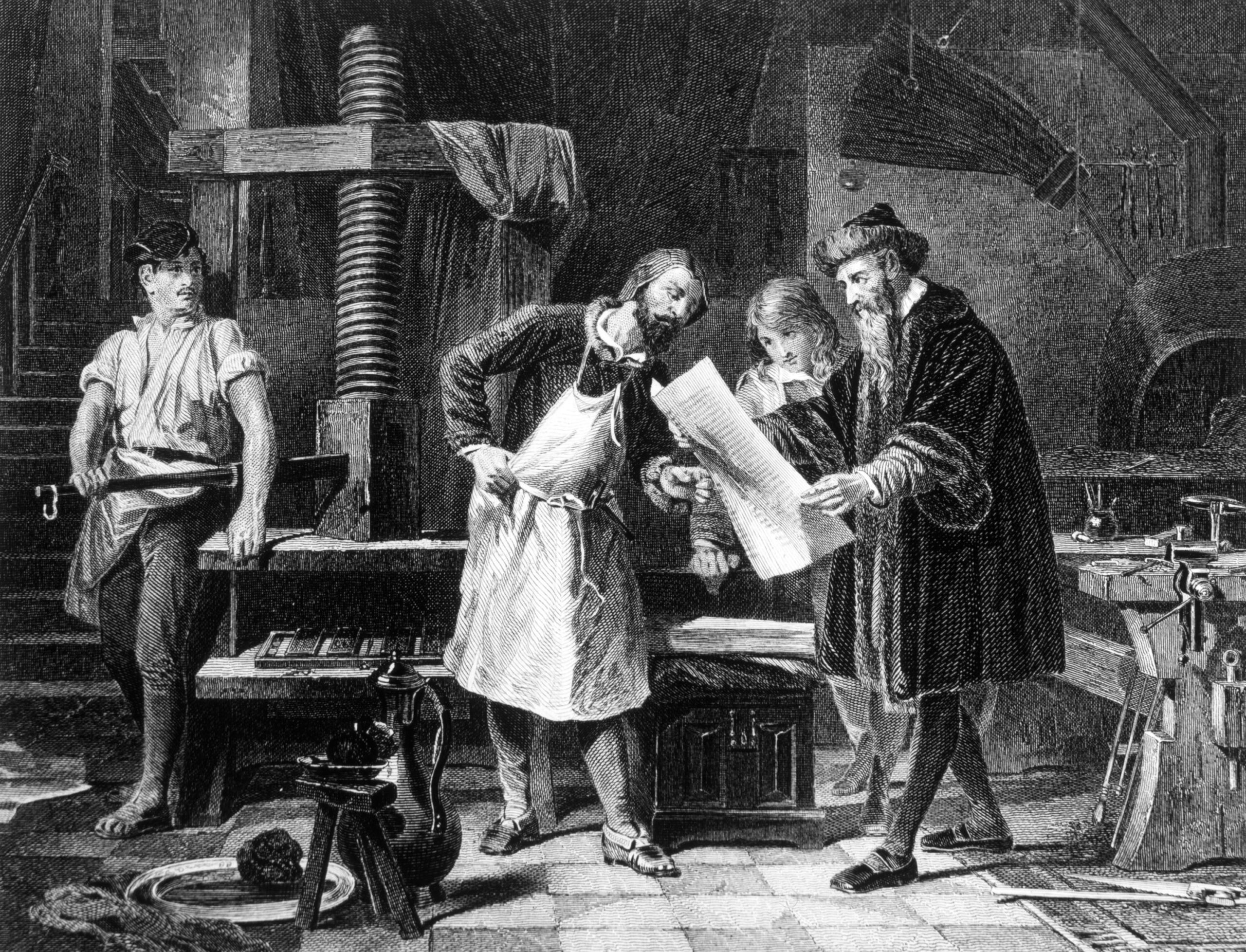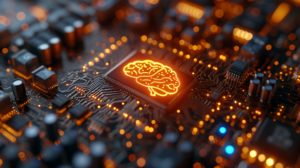
The Gutenberg Revolution: How the printing press shaped humanity and what it means for AI
January 22, 2024
Artificial Intelligence, Article, Trends
As we stand at the tipping point of an AI revolution, it is worth looking back at the printing press, another era-defining technology. What lessons can we learn from its impact on information access and dissemination to ensure equitable access and responsible use of information in the age of AI?
How the printing press democratised knowledge
Before the invention of the printing press, knowledge was scarce, expensive, and controlled by a few. Written communication was mostly in the form of manuscripts handwritten by scribes, usually monks or clerics who copied texts from ancient sources or other manuscripts. Manuscripts were scarce, expensive, and time-consuming to produce and often contained errors. Literacy was low, in that the lower classes had little access to education or books, and knowledge sharing and learning were confined to nobility, along with institutions such as monasteries, universities, and courts.
This all changed with the invention of the printing press. Although woodblock printing dates back to the ninth century in China, and movable type printing was widely used in China and Korea in the 10th century[1], the first movable type printing press was introduced in Europe by Johannes Gutenberg around 1450 AD. The Gutenberg Bible was the first printed version of the Bible, consisting of 1,282 pages and printed in 42-line columns. It is revered for its high aesthetic and technical quality.
Gutenberg’s invention of the printing press using movable face type was revolutionary. It signalled the start of the information revolution, enabling mass production and distribution of printed materials such as books, newspapers, and posters. It fostered creation and expression of information and accelerated the spread of literacy in Renaissance Europe. This stimulated education and culture among the lower classes, who gained more opportunities and skills to read, write, and learn, leading to an increase in social mobility.
The printing press also encouraged innovation and experimentation in science. English philosopher Francis Bacon, who is considered one of the founders of modern science and the scientific method, wrote in 1620 that the printing press was one of the three most important inventions of the Renaissance, along with the nautical compass[2].
According to estimates[3], approximately 1,000 printing presses were in operation throughout Western Europe by 1500, which had already produced more than 20 million impressions of various books. The spread of the printing press led to rapid global growth in book publishing.
Misinformation and job displacement
As with AI today, people had concerns around the risk of misinformation and propaganda, problems of bias and prejudice, and the threat of censorship with the easy availability of relatively cheap printing presses. The printing press was criticised for producing too many books of low quality and distracting people from the pursuit of true knowledge.
The Gutenberg press faced a backlash – the introduction of the printing press and mass production of books challenged the control of manuscripts by religious and secular authorities. Critics were concerned that the printing press would put monks and scribes out of work, as well as threaten the monopoly and influence of the literate elite. For instance, in 1476, a group of scribes in Paris attacked and destroyed a printing press set up by Johann Heynlin, a German scholar and printer. They feared the new technology endangered their livelihood and status and felt threatened by its potential to undermine their role as custodians of knowledge and culture.
Eventually, the printing press created a new industry around publishing and introduced new professions and skills in the printing industry, such as printers, typesetters, proofreaders, bookbinders, illustrators, publishers, and booksellers. Of course, it stimulated the development and innovation of other printing technologies, such as digital printing, and the evolution of other industries, such as paper and ink and toner.
Lessons for the AI era
The Gutenberg printing press and artificial intelligence are both revolutionary technologies that have the potential to transform the information age in profound ways.
Both can augment human capabilities, automate tedious tasks, enhance creativity and innovation, and generate new insights and discoveries. Both can also democratise information and empower people, but also pose challenges such as misinformation, bias, censorship, and ethical dilemmas. AI must be fostered when teaching literacy and education, as well as ensuring that there is collaboration across the AI ecosystem.
However, regulation is required to instil trust. In just the same way that the use of the Gutenberg printing press could be used to print and publish misleading information, AI can also be used in the same way. The veracity of AI must be checked – a job that cannot be left for AI to do for itself. Again, new roles will have to be forthcoming for AI to flourish: fact checkers, truth verifiers, counter-argument publishers, AI re-teachers, and so on will all be required to ensure that the human race keeps control of this new technology.
AI will undoubtedly change the world in the same way the printing press did many centuries ago. However, AI not only creates and processes information – it can also act on it, which can make it more powerful and unpredictable.
Although AI is showing how powerful it can be, it is showing that power in both good and bad ways. There is a saying along the lines of “A Lie will have run halfway around the world before the truth has got its trousers on”[4]. Wrong information created and distributed by AI needs a more responsive and meaningful truth to keep up with it.
AI may need to be used to identify all instances of its own ‘lies’, and either flag or delete them. It is in areas like this where the real AI battle will rage: it is here where vendors will have to ensure that they build faith among buyers. Quocirca advises that as well as leveraging the power of AI to aid in a vendor’s aims, vendors also should ensure that effort is put into the use of AI to ameliorate and remediate any problems that it brings to the fore.
[1] http://www.china.org.cn/arts/2023-10/30/content_116231396.htm
[2] https://www.oxfordreference.com/
[3] E. L. Eisenstein: “The Printing Revolution in Early Modern Europe”, Cambridge, 1993
[4] Originally Thomas Francklin, 1787, “Falsehood will fly, as it were, on the wings of the wind, and carry its tales to every corner of the earth; whilst truth lags behind; her steps, though sure, are slow and solemn.”




